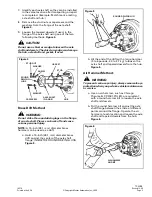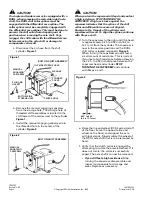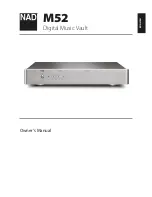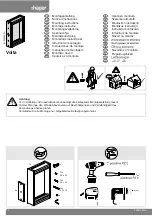
TP-9648
Revised 11-18
(16579)
Page 2
Copyright Meritor, Inc., 2018
Printed in the USA
6.
Use these traction devices accordingly:
Drivers Instructions
Locking the IAD
When encountering poor road or highway conditions where a
decrease in traction is anticipated, follow the recommended
procedures:
1.
Let up momentarily on the accelerator to relieve torque on the
gearing and any spinning conditions.
2.
Flip the IAD switch to the “LOCK” position. The differential lock
will engage.
3.
Proceed to drive cautiously.
Locking the DCDL
When encountering poor road or highway conditions where vehicle
speed is 25 mph or less and maximum traction is needed, follow the
recommended procedures:
1.
Without the wheels spinning, slipping or losing traction, flip the
control switch to the “LOCK” position while maintaining a
constant vehicle speed under 25 mph.
NOTE:
The differential lock system of some vehicles is connected
through the low speed range of the transmission. If this type of
differential lock system is used, the transmission MUST be operating
in the low speed range to allow the differential to lock.
2.
Let up momentarily on the accelerator to relieve torque on the
gearing, allowing the differential to lock.
3.
When the differential lock is activated, the indicator light will be
on and there may also be an audible signal.
4.
When the DCDL is fully locked, the vehicle will have an
“understeer” condition when making turns. Proceed cautiously
over poor road or highway conditions at 25 mph or less using
good driving judgment.
IAD Lock — First
DCDL Lock — Second
Provides improved traction to both the forward and rear drive axles
of a tandem.
Provides maximum traction potential to each wheel end of an axle.
May be applied at any speed (assuming both axles are rolling and
that spinout has not started to occur) and/or remain engaged for
long periods of time depending on weather conditions such as snow,
sleet, or rain.
To be applied for very short periods of time and at very low speeds
(25 mph or less) due to the possible effects on handling
characteristics of the vehicle with the lock engaged.
Manually turned on and off by a switch in the cab.
Manually turned on and off by a switch, but also set up to
automatically shut off, in most instances, when a predetermined
vehicle speed is obtained.









































